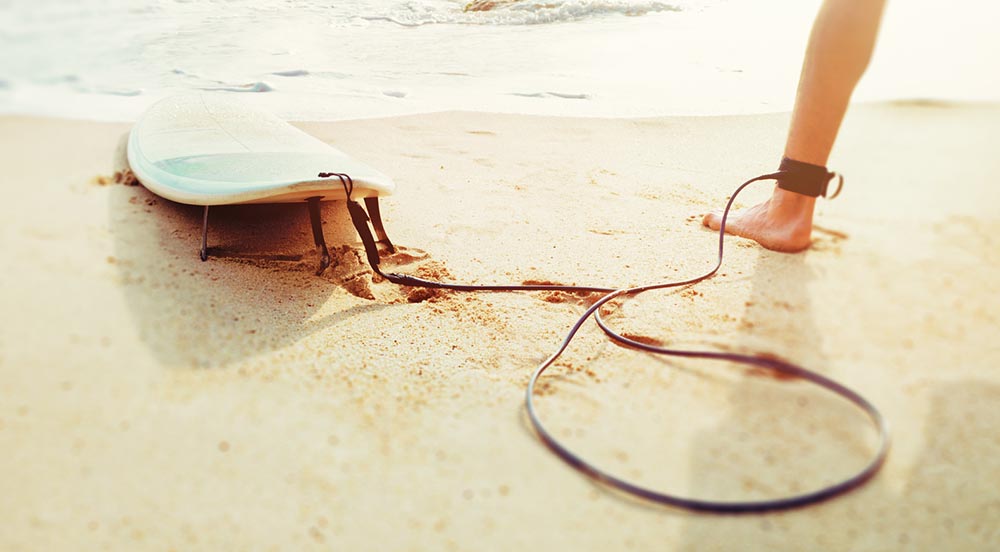
The leash and surf are two things that necessarily go hand in hand, a fundamental piece for the surfer’s safety. Learn more.
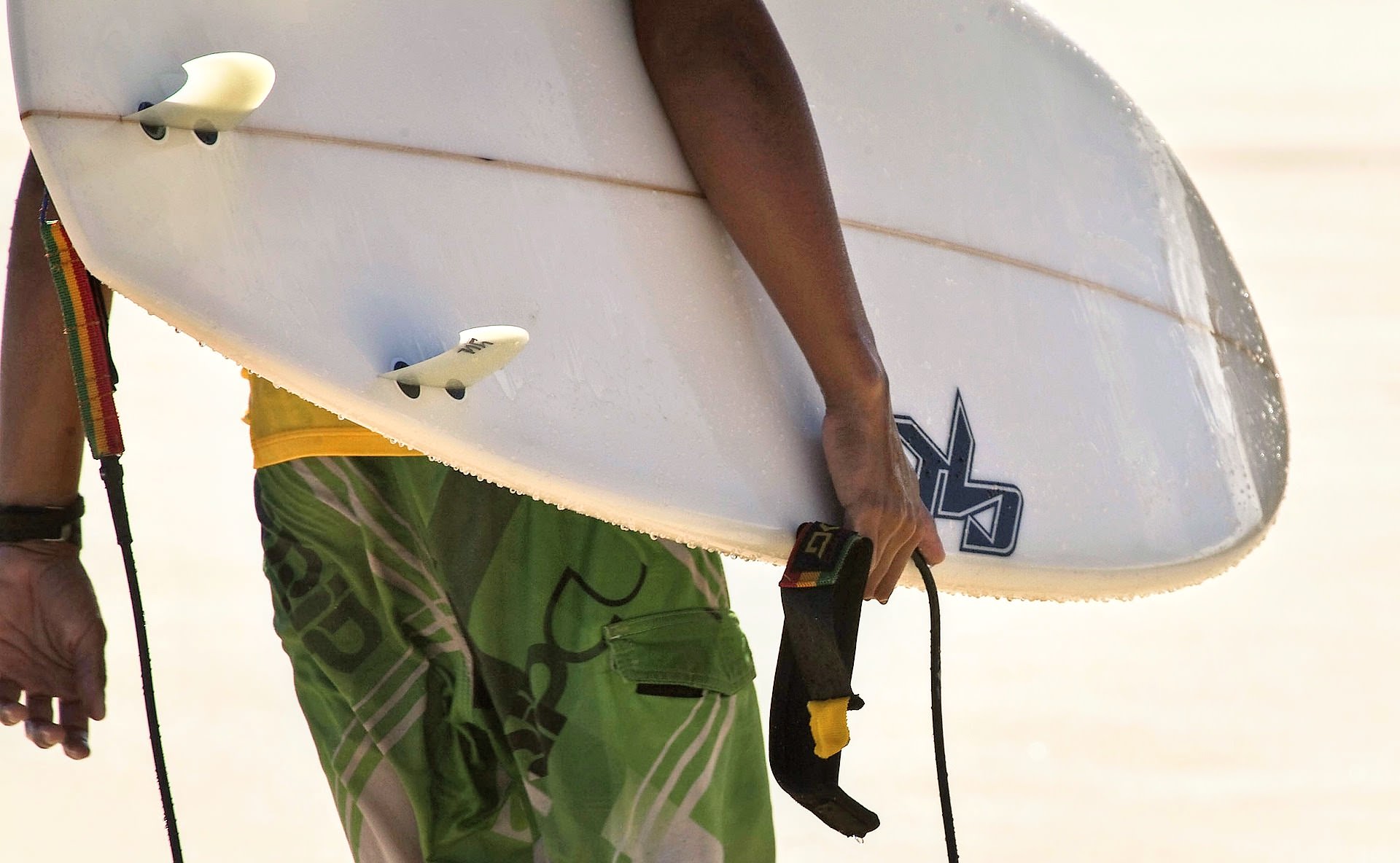
The Leash and Surf:
From Las Dunas Surf Resort we wanted to elaborate this post to talk a little about it and remember the importance of something so simple in our surfing.
This piece has an enormous importance, since it will allow us to maintain contact with our board after a fall or a tumble.
This allows us to have a flotation element at hand.
It also prevents us from hitting other surfers or swimmers if the board gets too far away from us. Another positive aspect is that it also saves us from having to swim to the shore for the board.
How was the Leash born?
The leash was popularized by Pat O’neill on the beaches of California, USA, in 1971. Tired of constantly swimming to shore to retrieve his board.
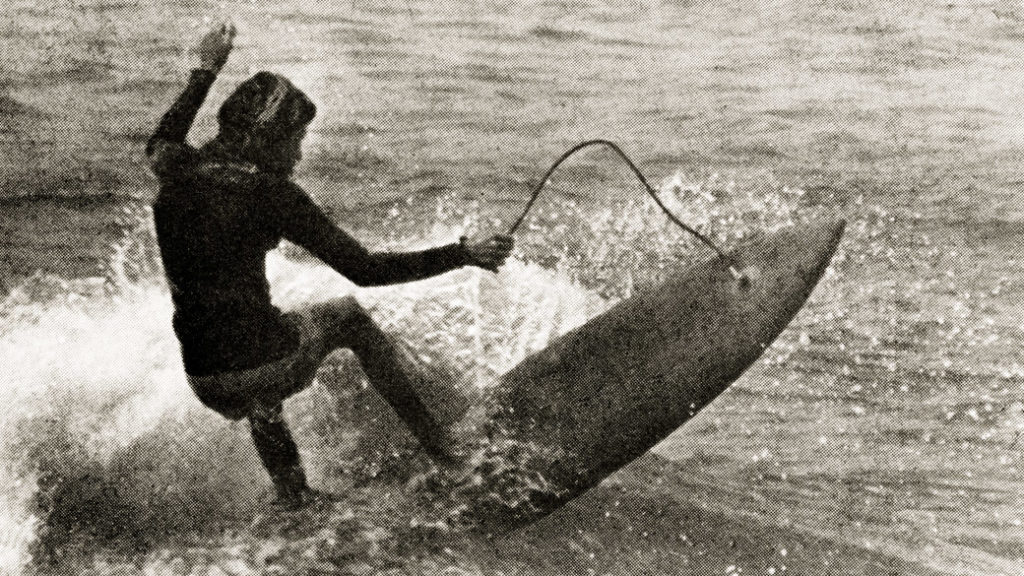
In those years the boards were bigger and heavier, which forced surfers to be in powerful physical condition. These conditions limited the time of the surfing sessions, since the physical exhaustion was strong.
Nowadays it is possible to find them made of different materials, so they have become an accessible and functional piece, with a wide range of uses and models.
Main aspects of the leash:
1. Its useful life:
It is relatively short, due to the use, from the continuous pulls, the salt, the solar exposure, constant humidity. At the same time, winding it on the keels produces bends and cuts.
All these damages deform it, helping it to break. The ideal is to change it every year or two, depending on its use and quality. It should be checked periodically to avoid problems.
In its care is to wash it with fresh water, and not to expose it too much to the sun, this helps to prolong its useful life.
2. Different Lengths:
Each leash in surfing has a suitable length with respect to the board, generally it is usually longer than the board. This guarantees a fair separation so that it does not hit us when we fall off it.
For big waves, a shorter leash is preferable, since it is preferable to get rid of the board and the leash breaks before, for safety reasons.
In the case of longboards, they are used in a relatively larger size, which allows to walk to the tip.
In turn, gives us a greater distance of separation and safety when falling off the board.
3. Thickness:
The bigger the wave size, the thicker the leash should be, around 8mm. For summer season waves, the usual is 5mm.
In cases where the board has a limited amount of liters, is thin and has little buoyancy, a thinner leash will offer less resistance in the water.
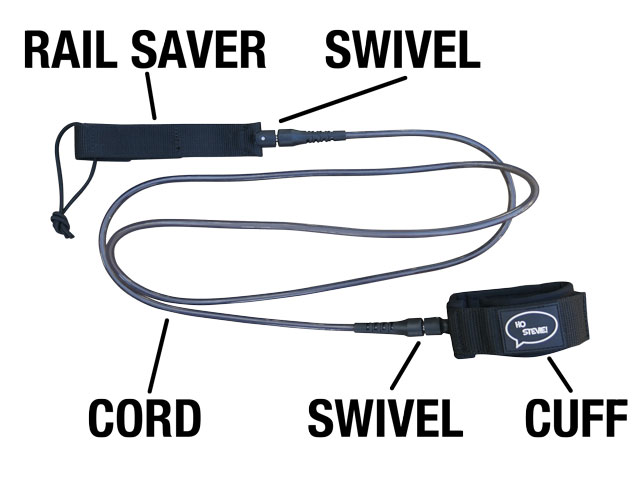
4. Various shapes and colors:
Since it first appeared, there have been an infinite number of shapes ranging from the traditional leash to the phone-style leashes, which are common in bodyboarding.
In terms of colors, the darker it is, the more it deteriorates with sun exposure. With black being the most commonly used color.
5. Leash remover:
A good leash in surfing is characterized by having a double remover, one on each side of the leash. This is a device that allows the leash and the board to rotate in opposite ways without rolling the leash between the legs.
6. At the knee or ankle:
The usual is to tie it on the ankle of the back leg, no matter if you are regular or goofy. The ones that are placed on the knee only apply to longboards, as it allows you to walk better on the board.
7. Pocket:
The great majority of leashes have a small pocket incorporated, you will be able to keep from the kerosene, to a small knife (in case to get tangled with fishing nets). Or any other small object that is indispensable.
8. Edge guard:
The flat surface at the beginning of the leash, before starting the “rope” itself, is called the edge guard. This part is in charge of protecting the tail of the board from any pull or fall.
It is important to know how to place it, to avoid possible damage and breakage to the tail of the board.
Now that you know all this about the leash in surfing, what are you waiting for to come to our Surfcamps, in Las Dunas you will live the best surf experience in Nicaragua.
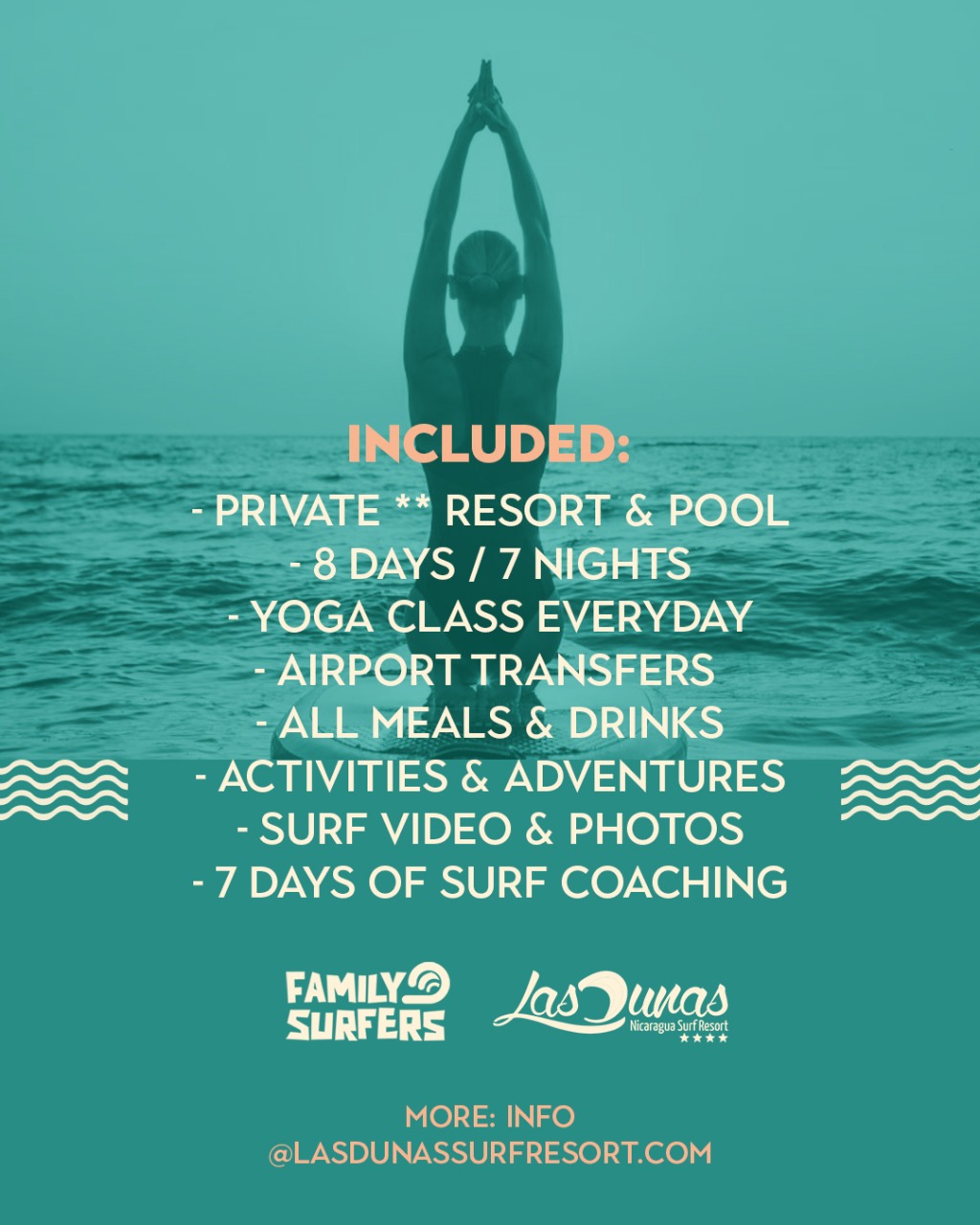
We are located in Aposentillo, Nicaragua. We have first class facilities, an expert staff and all the good energy that surfing has to offer.
Come and live the Las Dunas experience!
